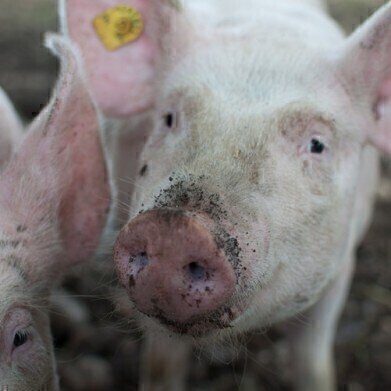Electrophoretic separations
Is Your Pork Medicine-Free? - Chromatography Investigates
Mar 22 2019
Antimicrobial resistance is recognised as one of the most serious threats to human health by the World Health Organization (WHO). It threatens the effective treatment of an increasing number of infections caused by bacteria, parasites, fungi and viruses. Antimicrobial resistance happens when microorganisms (bacteria or parasites for example) change their structure when they are exposed to the drugs we have developed to fight against and control them. This means our medicines become ineffective and the risk of diseases spreading and becoming more deadly increases.
Tainted animals and meat
One of the key elements of antimicrobial resistance is when bacteria become resistant to the antibiotics we use to treat them. Antibiotic resistance is simply the ability of bacteria to resist the effects of an antibiotic to kill it. WHO recognises that the increased use of antibiotics in animals that we use for food is contributing to the increased antimicrobial resistance in bacteria. This is especially true when the animals are intensively reared or produced.
There are several ways that these super-bacteria can be transmitted to humans - through direct contact as we kill and produce the meat we eat, or from the meat itself. Many of the bacteria that are carried by animals (Salmonella, Campylobacter and Escherichia coli) also affect humans. So, when these bacteria are treated by antibiotics, they are the same antibiotics that we as humans might take to treat these and other infections.
Ciprofloxacin in the kidney
A recent study published in the Journal of Pharmacy and Pharmacology has investigated whether antibiotics commonly used to treat both animals in our food chain and humans is found in the animal’s meat. The study looked at Fluoroquinolones, a group of synthetic antibiotics used extensively in both animals and humans to combat infections. The study focussed on Enrofloxacin (a commonly used bacteriostatic and bactericidal drug) used in animals and one of its metabolites Ciprofloxacin.
Ciprofloxacin is produced when Enrofloxacin metabolises. Ciprofloxacin is used to treat many different types of infections in humans - so any residue in meat for human consumption could be a health risk. The team behind the work took over 700 samples of pork from across five regions of India. Ultra High-Performance Chromatography (UHPLC) equipped with Diode Array Detector (DAD) was used for screening the samples for ciprofloxacin. The use of chromatography in metabolomics is discussed in the article, Capillary Electrophoresis-Mass Spectrometry for Micro-Metabolomics.
The team found that the levels of Ciprofloxacin were highest in kidney samples compared to either the liver or muscles samples analysed. This was probably due to the fact that Ciprofloxacin is excreted via a urinary route and so is more likely to build in the kidneys. None of the samples tested were above the permissible levels allowed.
Events
May 18 2025 Tempe. AZ, USA
May 21 2025 Birmingham, UK
Jun 01 2025 Baltimore, MD, USA
Jun 15 2025 Bruges, Belgium
Jul 14 2025 Kuala Lumpur, Malaylsia














